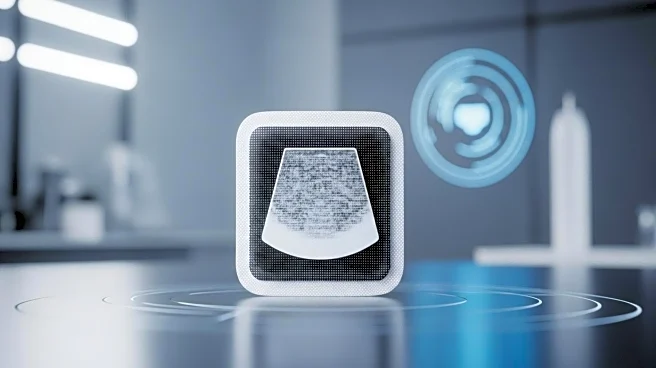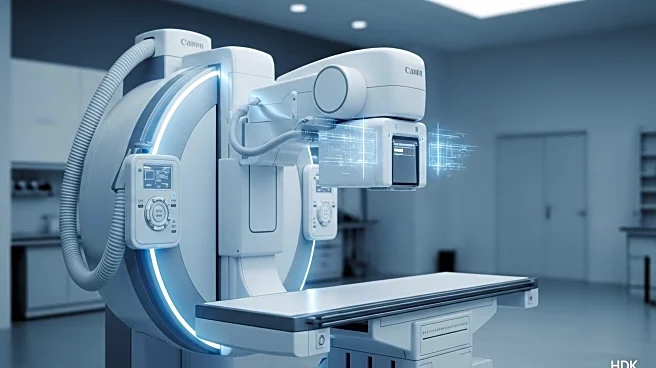What's Happening?
The Korea Institute of Science and Technology (KIST), in collaboration with several academic institutions, has developed a silicon-based disposable ultrasound patch that is both eco-friendly and high-performing. This new technology replaces harmful lead-based piezoelectric ceramics traditionally used in ultrasound devices, offering a safer alternative for medical applications. The patch, fabricated using semiconductor technology, is ultrathin and flexible, providing improved output and image quality compared to conventional devices. It demonstrated over 30% higher output pressure and 96% accuracy in blood pressure measurements during experiments, making it suitable for telemedicine and personalized healthcare.
Why It's Important?
The development of this silicon-based ultrasound patch is significant as it addresses environmental and health concerns associated with lead-based devices. By eliminating lead, the patch reduces the environmental burden and potential health risks, while also being cost-effective. Its ability to be produced at a fraction of the cost of traditional devices could lead to widespread adoption in medical settings, enhancing telemedicine capabilities and personalized healthcare. This innovation could also pave the way for advancements in early diagnosis of cardiovascular diseases and rehabilitation monitoring, broadening the scope of ultrasound applications.
What's Next?
The research team plans to further validate the safety and reliability of the silicon-based ultrasound patch in various clinical environments. They aim to expand its applications across different medical fields, including mental health management and early diagnosis of cardiovascular diseases. The team anticipates that the patch will lead the market for disposable ultrasound devices, given its economical production and environmental benefits. Continued research and development could further enhance its performance and applicability, potentially revolutionizing the medical imaging industry.
Beyond the Headlines
The shift from lead-based to silicon-based ultrasound technology represents a broader trend towards eco-friendly medical devices. This development highlights the growing importance of sustainable practices in healthcare, as well as the potential for semiconductor technology to innovate medical imaging. The flexibility and adaptability of silicon-based devices could lead to new forms and applications, potentially transforming how ultrasound imaging is utilized in various medical contexts.











